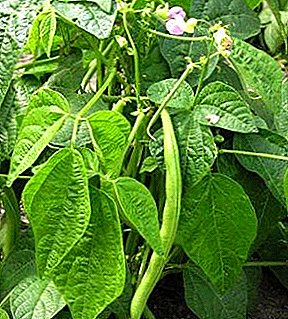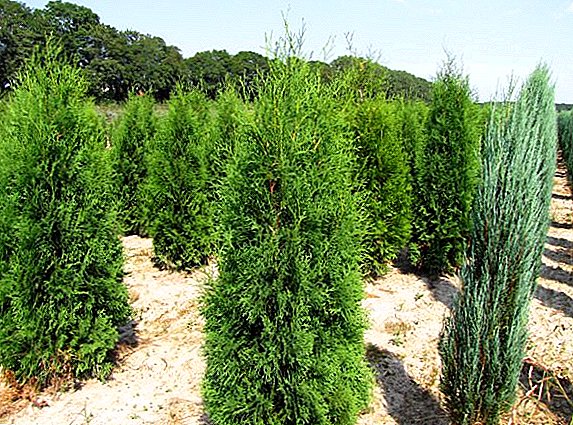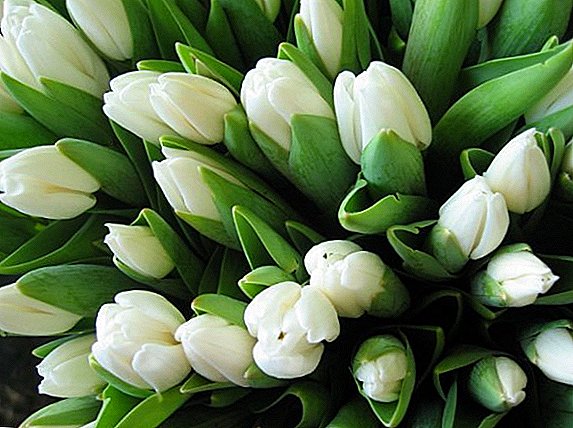 There are not many plants that bloom at night. Usually they are quite unpretentious and can not boast of luxurious buds.
There are not many plants that bloom at night. Usually they are quite unpretentious and can not boast of luxurious buds.
However, they are distinguished from daytime flowering plants not only by the ability to please the eye after sunset, but also by the strong, intoxicating and very pleasant aroma, which with the onset of dusk only becomes stronger.
Alissum
This shrub is also commonly known as "borachok". The plant is short, grassy. The height can vary from 20 cm to 40 cm. Strongly winding shoots expand widely, intertwining with each other. On the shoots there are flowers - small, with four petals. Their colors are very different - white, pink, lilac, purple, mauve, yellow. The flowers, although unremarkable in appearance, but bloom very densely and create the appearance of a dense carpet.  And although the flowers of alissum cannot boast a bright appearance, but they have a very bright aroma - they smell sweet honey, and with the onset of night this intoxicating aroma becomes only stronger and more distinct. Therefore, a flower planted on the site can perform not only a decorative function, but also play the role of honey plant. Alissum bloom long.
And although the flowers of alissum cannot boast a bright appearance, but they have a very bright aroma - they smell sweet honey, and with the onset of night this intoxicating aroma becomes only stronger and more distinct. Therefore, a flower planted on the site can perform not only a decorative function, but also play the role of honey plant. Alissum bloom long.
Read also about the main types of alissum (in particular, the Turkestan burachka type).
This cold-resistant plant is capable of pleasing a wonderful aroma with the color from spring (some species bloom in April) and before the first frosts, which sometimes occur not earlier than October. Such a long flowering period made the borage one of the most beloved gardeners.  Refers to ground cover and curb species. Perfectly performs a decorative function and looks good on the site. Great for decoration of the alpine slide.
Refers to ground cover and curb species. Perfectly performs a decorative function and looks good on the site. Great for decoration of the alpine slide.
Familiarize with the representatives of ground cover, curb flowers (annuals, perennials), flowers for alpine slides.
Alyssum is one-year and multi-year. It can be grown in open ground on the site, and in the room or in pots on the balcony. In care, it is unpretentious, does not need abundant watering, and weeds do not grow under a thick carpet of flowers and leaves.
Important! Although the borachok does not bloom at night, but blooms constantly, it is made by the night flower because light flowers are able to reflect the moonlight under cover of night, which is why the flower beds seem to be highlighted. In addition, the honey aroma of alissum becomes the most vivid and distinct at night.
Brugmansia
The flowers of this extraordinary plant is not for nothing called angel trumpets. They are shaped like gramophones - oblong-tubular, bell-shaped. The flowers are quite large - in length they can reach from 15 to 30 cm, and be about 17 cm in diameter with the widest part open. And the color can be very different - white and pink, yellow and orange, blue and red.  Brugmancia is a tropical herbaceous woody plant. In its homeland, in Latin America, it grows in the form of a small tree, but here it looks more like a sprawling large shrub with a broad crown. The leaves are large, resemble an egg. Young stems quickly become covered with smooth bark. And large flowers bloom one by one on thin and long peduncles. They always hang down. On one plant during the flowering period there are usually very many flowers, this amount can exceed a hundred by one bush.
Brugmancia is a tropical herbaceous woody plant. In its homeland, in Latin America, it grows in the form of a small tree, but here it looks more like a sprawling large shrub with a broad crown. The leaves are large, resemble an egg. Young stems quickly become covered with smooth bark. And large flowers bloom one by one on thin and long peduncles. They always hang down. On one plant during the flowering period there are usually very many flowers, this amount can exceed a hundred by one bush.  It is noteworthy in this beautiful tree that on hot sunny days the flowers of Brugmansia look a bit sluggish, half-closed and almost odorless. But as soon as the nightly coolness descends on the earth, Brugmansia awakens, blossoms, its flowers open and begin to exude a fragrance.
It is noteworthy in this beautiful tree that on hot sunny days the flowers of Brugmansia look a bit sluggish, half-closed and almost odorless. But as soon as the nightly coolness descends on the earth, Brugmansia awakens, blossoms, its flowers open and begin to exude a fragrance.
Learn more about Brugmansia: the main types, growing at home, reproduction by cuttings and seeds.
 Since the plant is tropical, it is not grown in mid-latitudes in the open field. Method of breeding - mainly tub.
Since the plant is tropical, it is not grown in mid-latitudes in the open field. Method of breeding - mainly tub.
For the summer, this queen of the night can be brought into the courtyard, the garden plot, the cottage, and she needs to spend the winter in the glazed loggia, since lowering the temperature below +10 ° C is detrimental to the flower.
Important! be careful - Brugmansia is poisonous! This plant is isolated from the genus Datura and all its parts contain dangerous hallucinogenic substances. Of course, you are unlikely to start using Brugmancia, but it’s better to protect it from children in order to avoid taking a “taste test”.
Vespers
Also, the plant is called matron evening, night violet or hesperis.  It is a biennial herbaceous plant, the stems of which reach 1 m in height. They are covered with dark green oblong leaves and crowned with delicate buds. The flowers of the night violet are small, of four petals. There are mostly two colors - white and purple, but today there are new two-color varieties or varieties, painted in lavender shade.
It is a biennial herbaceous plant, the stems of which reach 1 m in height. They are covered with dark green oblong leaves and crowned with delicate buds. The flowers of the night violet are small, of four petals. There are mostly two colors - white and purple, but today there are new two-color varieties or varieties, painted in lavender shade.  Hesperis flowers are very fragrant in the evening and at night. During the day, this smell is not so pronounced, but at night it opens up with many shades and fills the garden with intoxicating sweetish fragrances. The matron bloom at the evening party is not too long - it starts in late May or early June and lasts about a month and a half. Sometimes this period is shortened if the weather is hot and dry. Vesper though loves to grow in brightly lit areas, but does not tolerate the heat and ceases to bloom.
Hesperis flowers are very fragrant in the evening and at night. During the day, this smell is not so pronounced, but at night it opens up with many shades and fills the garden with intoxicating sweetish fragrances. The matron bloom at the evening party is not too long - it starts in late May or early June and lasts about a month and a half. Sometimes this period is shortened if the weather is hot and dry. Vesper though loves to grow in brightly lit areas, but does not tolerate the heat and ceases to bloom.  Night violet prefers a light, especially sandy, well-drained soil. Stagnant moisture for plants unfavorable. The flower tolerates frosts well, needs shelter for the winter only if there are severe frosts, and the snow has not fallen.
Night violet prefers a light, especially sandy, well-drained soil. Stagnant moisture for plants unfavorable. The flower tolerates frosts well, needs shelter for the winter only if there are severe frosts, and the snow has not fallen.
This plant blooms only in the second year, but in the garden it looks very decorative, looks good in flower arrangements.
Find out which flowers bloom in spring, summer, autumn; what are the annual and perennials (height, flowering period).
Sweet Tobacco
There was fragrant tobacco in the European open spaces thanks to Columbus. The plant is grassy, unusual, beautiful and very fragrant. It grows in small bushes 30-40 cm tall. It has erect stems, large leaves and small star-shaped flowers that bloom densely from the first summer days to the beginning of autumn.  Although the plant is perennial, it is thermophilic and in the middle lane it is rarely possible to save it for more than one year. Although it is necessary to recognize that some gardeners manage to grow the same fragrant tobacco in their beds up to 10 years.
Although the plant is perennial, it is thermophilic and in the middle lane it is rarely possible to save it for more than one year. Although it is necessary to recognize that some gardeners manage to grow the same fragrant tobacco in their beds up to 10 years.  The color of the flowers depends on the type of plant and can be white or red, pink, crimson or yellow. However, the most vivid aroma of flowers with the most faded color. Red buds smell the least. And although fragrant tobacco and blooms throughout the day and night, its flavor becomes most noticeable just after sunset. The smell is very unusual, spicy, intoxicating. And he is definitely worth planting fragrant tobacco in his plot.
The color of the flowers depends on the type of plant and can be white or red, pink, crimson or yellow. However, the most vivid aroma of flowers with the most faded color. Red buds smell the least. And although fragrant tobacco and blooms throughout the day and night, its flavor becomes most noticeable just after sunset. The smell is very unusual, spicy, intoxicating. And he is definitely worth planting fragrant tobacco in his plot.  In the care of the plant does not cause much trouble, except that he likes regular watering and wet soil, as well as a lot of sun. The soil fertility is unpretentious, but the faded flowers are better cut off - this will stimulate the emergence of new buds.
In the care of the plant does not cause much trouble, except that he likes regular watering and wet soil, as well as a lot of sun. The soil fertility is unpretentious, but the faded flowers are better cut off - this will stimulate the emergence of new buds.
When creating a flower bed plays an important role colors. Find out what colors of blue and yellow can be used in flower bed design.
Lotus brahma kamal
Flower gods - as in India they call this extraordinary night plant. This lotus is mountainous, it is also called bitter. It grows high in the mountains at a height of 4.5 thousand meters above sea level, where it is always very cold.  The lotus of Brahma-Kamal is so named after the Hindu god of creation, Brahma. Its white large flowers delight the human eye with its flowering not for long, as the lotus blooms only one day a year and only at night.
The lotus of Brahma-Kamal is so named after the Hindu god of creation, Brahma. Its white large flowers delight the human eye with its flowering not for long, as the lotus blooms only one day a year and only at night.  At dusk, its petals open - and this is a very rare phenomenon. In India, it is even believed that if you are lucky to see the blooming Brahma-Kamal, it is all about success and success.
At dusk, its petals open - and this is a very rare phenomenon. In India, it is even believed that if you are lucky to see the blooming Brahma-Kamal, it is all about success and success.
Mattiola
This is a classic park plant, although now somewhat out of fashion. But in vain, because Mattiola (or Levkoy) is suitable for various flower arrangements in landscape design.
Familiarize yourself with the variety and features of mattiola forms.
It is a spreading herb, the stems of which reach a height of about half a meter. It has oblong linear green leaves with jagged edges, and small and rather faded flowers are collected in loose brush-shaped inflorescences.  Mattiola blooms thickly. The flowering period lasts all summer, from June until the end of August. During the day, the flowers are closed and look faded, which is why the plant does not make much of an impression. But in the evening and at night, his hands bloom, the flowers open, and a intoxicating honey aroma is poured around, which is not heard during the day. Flowers are white, purple, lilac and pale yellow.
Mattiola blooms thickly. The flowering period lasts all summer, from June until the end of August. During the day, the flowers are closed and look faded, which is why the plant does not make much of an impression. But in the evening and at night, his hands bloom, the flowers open, and a intoxicating honey aroma is poured around, which is not heard during the day. Flowers are white, purple, lilac and pale yellow.  Mattiola two-horned Mattiola is quite unpretentious in the care. The soil loves medium-fertile, watering - moderate. These flowers are great for decorating the site, they are often planted near the terraces or in the garden, in park areas and squares, near benches and gazebos in the recreation area, along paths and avenues. In the evening, their spicy aromas are especially pleasant, therefore mattiol is often used as aromatherapy.
Mattiola two-horned Mattiola is quite unpretentious in the care. The soil loves medium-fertile, watering - moderate. These flowers are great for decorating the site, they are often planted near the terraces or in the garden, in park areas and squares, near benches and gazebos in the recreation area, along paths and avenues. In the evening, their spicy aromas are especially pleasant, therefore mattiol is often used as aromatherapy.  Mattiola gray Night view is considered mattiola two-horned - it has absolutely inconspicuous small flowers that do not smell at all during the day and are completely closed, but at night the hands bloom and smell sweet. Popular garden view left gray slightly different. It has larger inflorescences, which are revealed even during the day and have only a faint fragrance, which does not change with the onset of night.
Mattiola gray Night view is considered mattiola two-horned - it has absolutely inconspicuous small flowers that do not smell at all during the day and are completely closed, but at night the hands bloom and smell sweet. Popular garden view left gray slightly different. It has larger inflorescences, which are revealed even during the day and have only a faint fragrance, which does not change with the onset of night.
Therefore, the two-horned mattiol is used as an aromatic night plant, and the left-hand one is used as a decorative park.
Important! Mattiola cannot be planted on those areas where other cruciferous species used to grow, otherwise the flower will hurt and will be affected by the main pests of this family.
Mirabilis
Night beauty, or mirabilis, is a herbaceous plant from the Niktagin family. It happens both annual and perennial. It grows in the form of a sprawling tall bush, reaching 1 m in height.  The leaves of mirabilis ovate or oval, oppositely arranged, petiolate. Top sheet plate looks glossy, smooth and shiny. The color is dark green, but in the center of the leaf lies a lighter vein of color.
The leaves of mirabilis ovate or oval, oppositely arranged, petiolate. Top sheet plate looks glossy, smooth and shiny. The color is dark green, but in the center of the leaf lies a lighter vein of color.
Read also about planting and caring for Mirabilis in the garden, growing Mirabilis from seeds.
The flowering period begins in May or June. At this time, on the shoots in the axils of the leaves flowers bloom. They have a bell-shaped or dome-shaped form with accrete petals. Flowers can be painted white, pink, purple, crimson and yellow. Moreover, there are species that can have flowers on one bush, containing several flowers or shades on the petals of one flower at once.  The heat-loving night beauty easily endures heat and drought. She is able to wait out hot days without any harm, during which she needs infrequent watering - once a week will be enough. But here mirabilis is afraid of the cold. When the temperature drops to -5 ° C, the plants die. Therefore, in some regions, these bushes grow as annual plants, and in the southern and warm areas they are simply well-warmed for the winter. Since the root tuber of the night beauty is close to the ground surface, the layer of mulch should be thick and really warm - about 15 cm of opal foliage and lapnik.
The heat-loving night beauty easily endures heat and drought. She is able to wait out hot days without any harm, during which she needs infrequent watering - once a week will be enough. But here mirabilis is afraid of the cold. When the temperature drops to -5 ° C, the plants die. Therefore, in some regions, these bushes grow as annual plants, and in the southern and warm areas they are simply well-warmed for the winter. Since the root tuber of the night beauty is close to the ground surface, the layer of mulch should be thick and really warm - about 15 cm of opal foliage and lapnik.  Large, dense and sprawling green bushes of the night beauty are often planted in flower beds as a background. During the day, this thick greens do not distract attention and allow you to admire other colors. But in the evening and at night, when the buds of all the other plants are closed, Mirabilis blossoms and smells sweet, becoming a real decoration in the garden.
Large, dense and sprawling green bushes of the night beauty are often planted in flower beds as a background. During the day, this thick greens do not distract attention and allow you to admire other colors. But in the evening and at night, when the buds of all the other plants are closed, Mirabilis blossoms and smells sweet, becoming a real decoration in the garden.
This is interesting: 12 most unusual colors
Hilotsereus
Hilotsereus cactus deserves special attention. It comes from warm Central and South America and belongs to liana-like epiphytic cacti - this means that it grows in the wild on the trunks of large trees.  Stems are long, can reach several meters in especially large representatives. Can be placed either vertically or look down. The hilotsereus grows very quickly and often forms a spreading shrub of a variety of long and creeping three- or four-sided stems. Its spines are very soft, resemble a bristle. And on the stem there are aerial roots.
Stems are long, can reach several meters in especially large representatives. Can be placed either vertically or look down. The hilotsereus grows very quickly and often forms a spreading shrub of a variety of long and creeping three- or four-sided stems. Its spines are very soft, resemble a bristle. And on the stem there are aerial roots.
With proper care and favorable conditions, the hilocereus may bloom, moreover, in any season except winter. It is noteworthy that the flowers of this cactus differ in phenomenal size - one flower can reach 40 cm in diameter. And the smaller the flowers on the plant, the larger they will be. Flowers are predominantly white, with oblong petals, and in the center are large golden-yellow stamens.  The peculiarity of hilotsereus is that its huge flowers bloom only at night, they look very bright and emit a pleasant and delicate scent.
The peculiarity of hilotsereus is that its huge flowers bloom only at night, they look very bright and emit a pleasant and delicate scent.
At the end of the flowering period, the hilotsereus cactus produces an unusual fruit - pitahaya, pitaya, or dragon fruit. However, when grown at home, the plant does not bear fruit.
Did you know? Pitaya has a delicate pleasant taste, and the weight of a fruit can vary from 150 grams to 1 kg. Moreover, in Hilocereus not only the fruit is edible, but also the flowers that give it. From flower petals it turns out delicious fragrant tea.
This cactus is often grown in pots on a windowsill. It is unpretentious and undemanding. But it grows very quickly - transplantation is required annually and carried out in the spring. When the cactus becomes very large, they try not to disturb him to the maximum. Signal to transplant are perhaps the roots that are shown above the ground.
Enotera
This beautiful flower has many names: Oslinnik, onager, evening primrose and night candle. It can be both undersized and tall. The growth of evening primrose ranges from 30 cm to 1 m. It can also be one-year, two-year, and long-term.  Enotera has long shoots that can be both straight and creeping. On them are located on short petioles oblong oval pubescent leaves, similar to donkey ears.
Enotera has long shoots that can be both straight and creeping. On them are located on short petioles oblong oval pubescent leaves, similar to donkey ears.
Read also about growing enotery and benefits for human health.
Primrose flowers are quite large. They are lemon-yellow and white, pink and even blue. But in the dark they will create a glow effect, which is why the plant was called the night candle. Flowers have a pleasant sweetish aroma, sometimes grow alone, and sometimes are collected in loose inflorescences.  Evening primrose has all day buds. They bloom with the onset of twilight, and this happens so rapidly that you can watch the buds unwind, straighten up and begin to smell in a few minutes right in front of your eyes. But in the afternoon they wither and fall. Next night new flowers are opening. Since the open buds bloom during a couple of morning hours, during this time the insects have time to pollinate them.
Evening primrose has all day buds. They bloom with the onset of twilight, and this happens so rapidly that you can watch the buds unwind, straighten up and begin to smell in a few minutes right in front of your eyes. But in the afternoon they wither and fall. Next night new flowers are opening. Since the open buds bloom during a couple of morning hours, during this time the insects have time to pollinate them.
The period of flowering of evening primrose lasts all summer, when the plant pleases with evening bright flower candles. Sometimes the buds can open even in the daytime, provided that the weather is overcast and the sun is not showing due to dark clouds.  In the flowerbeds, a night candle is usually planted in the background, since large and thick green bushes are rather unremarkable during the day and do an excellent job with the role of vegetative background. And at night, when all the other flowers are “sleeping”, the evening primrose, on the contrary, “lights up” with lights.
In the flowerbeds, a night candle is usually planted in the background, since large and thick green bushes are rather unremarkable during the day and do an excellent job with the role of vegetative background. And at night, when all the other flowers are “sleeping”, the evening primrose, on the contrary, “lights up” with lights.
Did you know? The presence of biological clocks in flowers was used by Karl Linnaeus to create flower clocks. They consisted of several sectors, each of which grew a certain kind. Interestingly, the clock was quite accurate, it was possible to determine the time with a half-hour and real time difference.
Epiphyllum
Another cactus with beautiful large flowers, which is also known as phyllocactus.
Grows as a spreading bush. Stems - long, flat, fleshy, resemble leaves. Spines are located at the edges. The branches are most often creeping and climbing, because of which the plant is mainly grown as ampel. On the stalk often appear aerial roots.  With good care, epiphyllum in spring and summer blooms with very large flowers that can be up to 40 cm in diameter. The color can be white, cream, pink and red.
With good care, epiphyllum in spring and summer blooms with very large flowers that can be up to 40 cm in diameter. The color can be white, cream, pink and red.
Learn more about epiphyllum: species description, proper care.
Phyllocactus can flourish during the day and at night. The buds smell very nice and have a long flower tube, which makes them funnel-shaped. Flowers are so beautiful that the people epiphyllum is often called orchid cactus.  Philocactus is most often grown in indoor conditions, but even the artificial environment can grow beautifully and even bear fruit if it can be provided with cross-pollination. The fruits of this cactus are quite edible, have a pleasant fruity taste and aroma.
Philocactus is most often grown in indoor conditions, but even the artificial environment can grow beautifully and even bear fruit if it can be provided with cross-pollination. The fruits of this cactus are quite edible, have a pleasant fruity taste and aroma.  The plant blooms in spring, and each individual bud lasts about 5 days. В это время нельзя переносить эпифиллум или менять его месторасположение, иначе он сбросит цветы. Если в период цветения кактус регулярно подкармливать и ухаживать за ним, то осенью он может порадовать повторным цветением.
The plant blooms in spring, and each individual bud lasts about 5 days. В это время нельзя переносить эпифиллум или менять его месторасположение, иначе он сбросит цветы. Если в период цветения кактус регулярно подкармливать и ухаживать за ним, то осенью он может порадовать повторным цветением.
Did you know? In Hinduism, flowers are used in sacrifices - they are burned in the temple fire to protect against disease.
Night flowers are special plants. They bloom after dusk, decorate the evening garden with delicate flowers and simply smell amazing, forcing you to enjoy all faces of floral, spicy and sweetish aromas.












